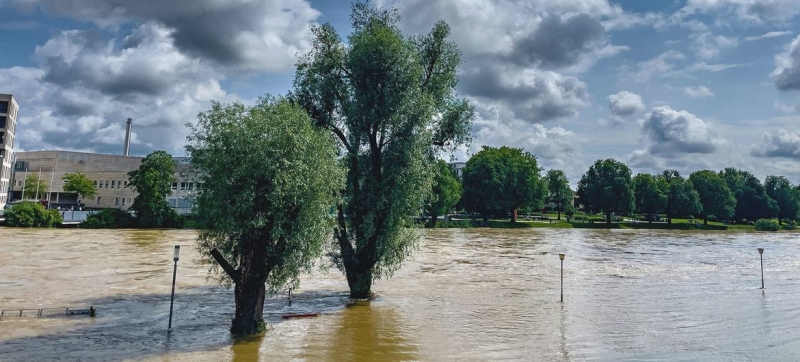
Flooding in Germany. 2023 was the driest year for the world’s rivers in more than three decades Climate and Environment
According to a new report from the World Meteorological Organization (WMO), 2023 was the driest year for the world’s rivers in more than three decades, indicating a shortage of water resources.
Over the past five years, the inflow of water into rivers from reservoirs, and vice versa – the outflow of water from rivers, have been below normal, thus reducing the volume of water available for agricultural and other uses.
Currently, 3.6 billion people have limited access to water at least a month a year, and this figure is expected to increase to more than 5 billion people by 2050.
Glacier Loss
The State of the World’s Water report says that glaciers have suffered their largest mass loss – more than 600 gigatons of water – in the past half century. 2023 marked the second year in a row that ice loss was reported in every single region of the world with glaciers.
The events are mainly related to extreme melting in western North America and the European Alps. Swiss glaciers have lost about 10 percent of their volume in the last two years.
In terms of snowpack volumes, the spring and summer of 2023 in North America were the lowest on record (1967–2023).
Droughts and floods
Elevated temperatures in 2023 contributed to prolonged droughts. There was also a significant amount of flooding around the world.
Extreme hydrological events were influenced by natural climate conditions – the transition from La Niña to El Niño in mid-2023, as well as anthropogenic climate change.
“We are receiving distress signals in the form of increasingly extreme precipitation events, floods and droughts, which are taking a heavy toll on human life, ecosystems and economies. Melting ice and glaciers threaten long-term water security for many millions of people. And yet we are not taking the urgent action needed,” said WMO Secretary-General Celeste Saulo.
“As a result of rising temperatures, the hydrological cycle has sped up. It has also become more chaotic and unpredictable, and we are facing increasing problems of having too much or too little water. A warmer atmosphere holds more moisture, which contributes to heavy rainfall. “Faster evaporation and drying of soils worsen drought conditions,” she added.
WMO report contains most comprehensive information on water
Little is known about the true state of the world’s freshwater resources, Saulo said. The WMO report is intended to contribute to improved monitoring of these resources, data sharing and cross-border cooperation. It is based on contributions from dozens of national meteorological and hydrological services and other organizations and experts.
The report contains the most comprehensive information to date on lake and reservoir volumes, soil moisture data, and more detailed information on glaciers and snow cover.
Read also:
